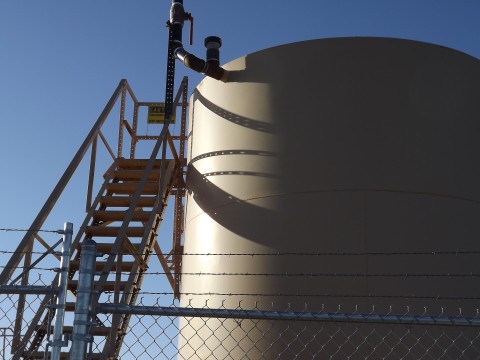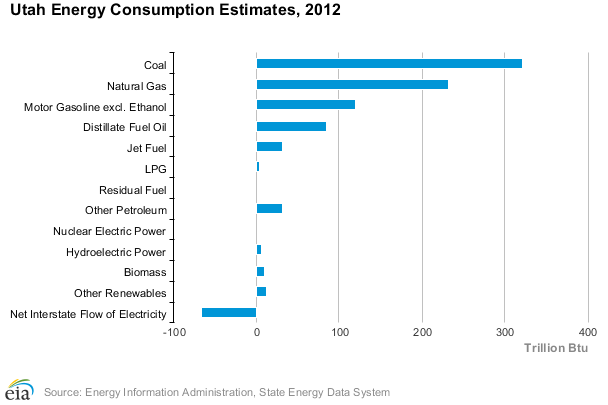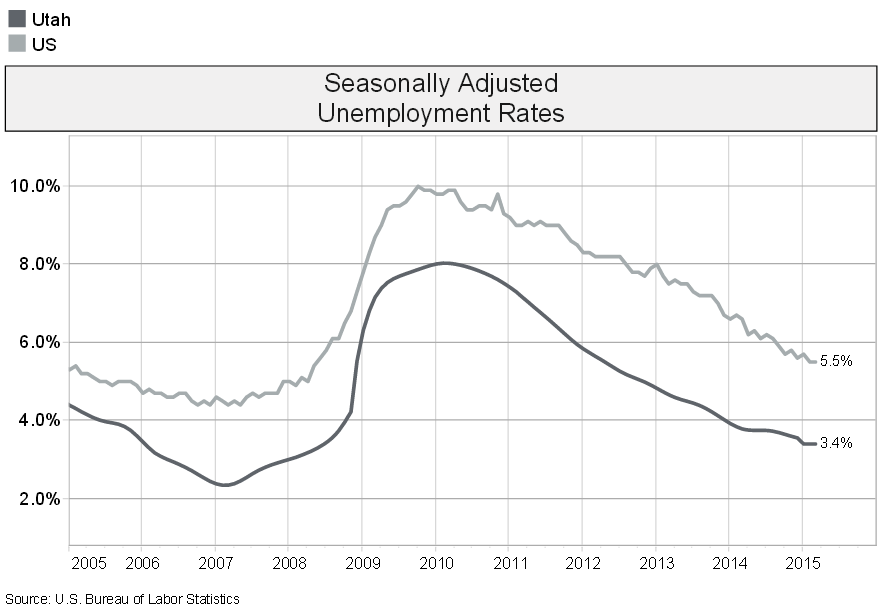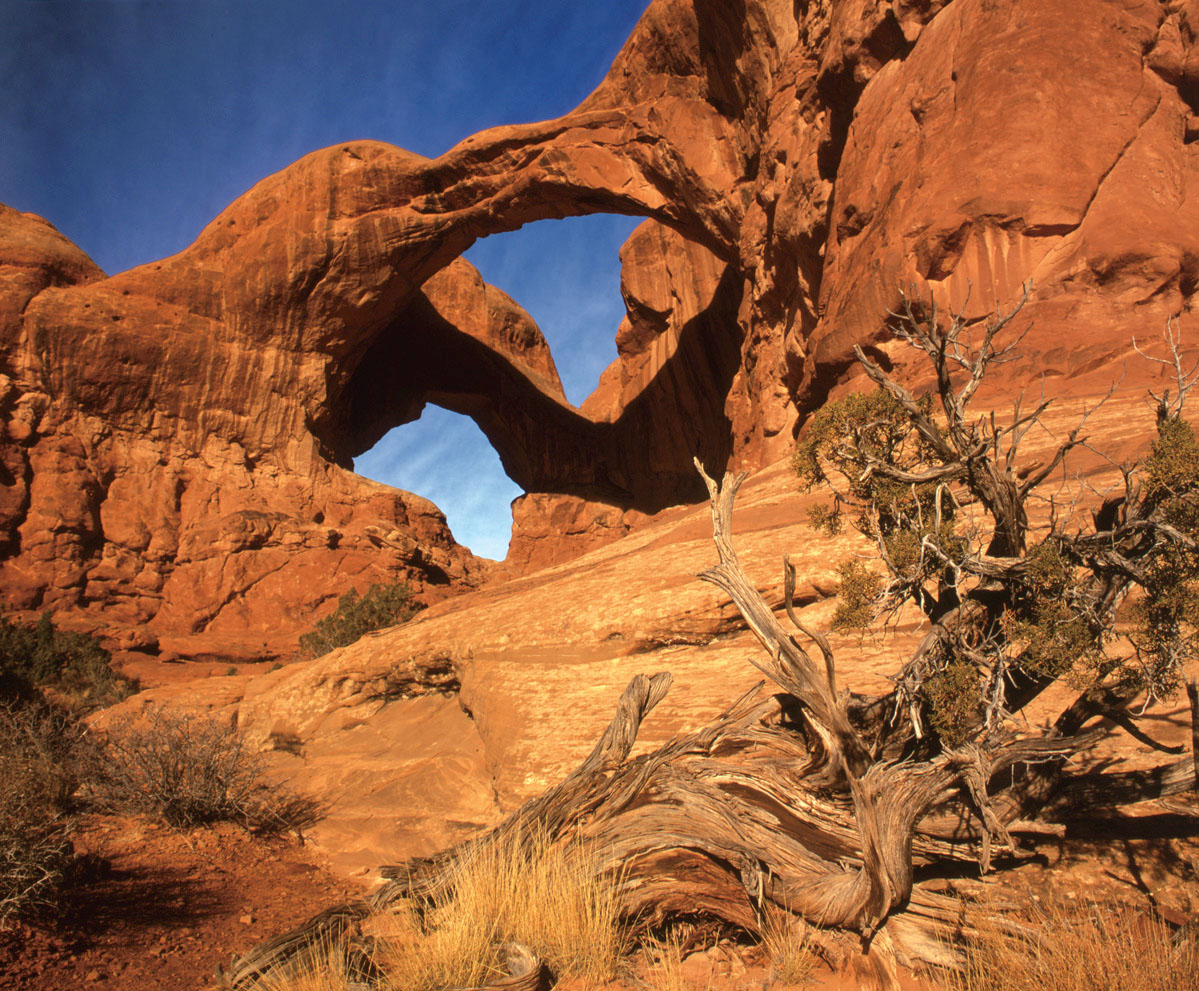An OAG360® Exclusive: Interview with Gary Herbert, Governor of Utah
Today, Utah has one of the lowest levels of unemployment in the United States, second only to North Dakota. The impressive levels of job growth the state has seen in the last few years have come under the leadership of Governor Gary Herbert.
Governor Herbert first took up the position in 2009, following the resignation of Governor Jon Huntsman and went on to win the gubernatorial race in 2012.
Oil & Gas 360® spoke with Governor Herbert about the rapid employment growth in his state, his administration’s economic growth initiative, his energy plan, the governor’s views on federal oversight of hydraulic fracturing, his support for international free trade, foreign investment in Utah’s oil sands and many other topics in this exclusive interview.
OAG360: Governor, when you were sworn in for your first term in August 2009, the Bureau of Labor Statistics reported that Utah’s unemployment was approaching 8.0%. Fast forward to February 2015, we’re about halfway through your second term at that point, and unemployment is down to about 3.4%. Can you tell me the story behind this employment growth and what the energy sector had to do with it?
UTAH GOVERNOR GARY HERBERT: Well, I came in at the height of the Great Recession and I think it probably peaked about 8.4% unemployment rate. But we made it our number one focus on turning the economy around. I think every elected official– that should be your focus, really, the economy. So we took a look at where we’re at and where we wanted to be and set some goals.
Our goals were to be the best performing economy in America and a premier global business destination. So that was our mission statement, … and we set about determining what would help us to get those goals realized.
We set as pillars, economic development, education and energy … with self-determination as the four cornerstones, as far as what we’d do to put this together. And frankly we’ve created a very business-friendly environment, I believe. In the private sector we’ve tried to keep government off the backs of the private sector, we’ve tried to make sure we have competitive tax rates, we’ve had regulation reform.
And we’ve been able to develop all sectors of our economy with the cornerstone of that effort being in our energy arena and, clearly, the results are in. You know five years later we have probably the best preforming economy in the nation.
Our job growth creation is at 4.7%, the private sector is number one right now in America; unemployment rate is at 2.4% and our international trade has grown by nearly double over the last five years. So on all fronts, every sector of our economy is now going in a very positive way. The only thing that’s not growing in Utah right now is state government – that’s flat lined and actually we have fewer state employees now working in state government in Utah today.
You would have to go back to the year 2001 to find a smaller number and that’s in the face of about seven hundred thousand new people calling Utah home, as probably the third or fourth fastest growing state in America, population-wise.
So, good results. We’re pleased, we’re grateful, we’re humbled at the great economic growth that we’ve seen here in Utah and we believe we can continue to have that happen. There is no reason why we can’t continue to grow the economy in Utah.
OAG360: With the current decline in oil prices, and they have been making a comeback in the last few weeks, has that had any effect on job growth in Utah or the overall job count?
GOVERNOR HERBERT: Well one of the very smart things that we’ve done over the last few years is to diversify our economy; so interesting enough, Utah–three million people nestled at the foot of the Rocky Mountains–has the fourth most diversified economy in America today. So we don’t have all of our economic eggs in one basket, and so when one sector can be down, another sector can be up. Clearly in some of our energy areas of the state with the dropping prices of oil, some of our eggs have laid down.
We’ve had people that have been laid off and so unemployment has really increased somewhat in the energy field, in the oil fields, natural gas development, but we’ve had a resurgence now in coal. We have opportunities to export some of our coal to other areas of the world that are in need of low cost energy. We use a lot of coal in cleaner processes and cleaner extraction processes and with new technology here in Utah, which has helped keep our energy cost low, which again gives us some competitive advantage when it comes to economic growth and development.
 We’ve had some impact [from the oil downturn] but it has been, you know, fairly minimal and as you mentioned the prices are going back up. We, the people, believe you know what’s going down is going to turn around and go back up, and so our outlook is very bright.
We’ve had some impact [from the oil downturn] but it has been, you know, fairly minimal and as you mentioned the prices are going back up. We, the people, believe you know what’s going down is going to turn around and go back up, and so our outlook is very bright.
Even in the energy field we’re very optimistic about the future of energy development in the state Utah.
OAG360: You talked about coal and energy generation in Utah. I know that one of the goals of the State is to be producing 25% more electrical energy than it consumes, by 2020. What’s the energy mix going to look like for that? Are there going to be places for natural gas and renewables in that plan as well?
GOVERNOR HERBERT: Absolutely. One of the very smart things we did when I came here we said, “lets develop an energy plan.” Nobody had done that. The country didn’t have an energy plan. It was just kind of fly-by-the-seat-of-your-pants, so we got together some really smart people in energy. Got a different state culture at the table: what would a ten year energy plan look like for Utah? And we developed one that’s a work in progress, meaning that it continually evolves as we move ten years in the future.
It’s certainly based on an “all of the above” approach in a free market competitive society. So I’m not really in favor of subsidizing any form of energy, no matter what it is. I think energy needs to go out and compete, [and] as it competes we find innovative ways to compete and succeed in the competition.
We believe that the public wants one, sustainable energy. They want to know when they turn the switch on, lights go on; that energy is available in abundant quantities and is sustainable. Two, they want it to be affordable, meaning they don’t want to break the bank of their household budgets. They don’t want to break the bank in their business budgets in the manufacturing plants. They want energy to be affordable. And lastly they want it to be cleaner.
Everybody’s concerned about clear skies, cleaner air, making sure our waters are clean and being good stewards of the earth and make sure our home is clean; sometimes cleaner energy and affordable energy are at odds with each other. We recognize that as we work together we’re finding that technology is in fact, the savior of us all and finding better ways to do things we certainly, in Utah, are cleaning up the air.
Major strides in reduction of pollution. What we’ve had here in the state of Utah, we have better technology to help us with our extraction industries we have better technology now that allows us in our processing of our oil refineries, in our coal mines, in our natural gas. The technology of hydraulic fracturing has allowed us to, in fact, produce large supplies of natural gas which is certainly a transitional fuel toward more renewables and greener fuels.
And so we’re just allowing the private sector to go out there and develop, find better ways to do things, recognizing that the public wants sustainability, affordability and cleaner fuels. I believe that’s what’s happening here in Utah.
OAG360: You mentioned hydraulic fracturing and how that’s helping to produce more gas. Last week, North Dakota and Colorado joined Wyoming’s lawsuit against the Department of Interior challenging the BLM’s authority to impose new federal rules on the practice of hydraulic fracturing. What is your stance on how much authority the federal government should have in regulating natural resources at the state level?
GOVERNOR HERBERT: You know I believe that states have done a very good job of regulating hydraulic fracturing themselves. I don’t believe we need an extra layer of oversight. I think it becomes redundant and just expensive and more costly when it comes to producing energy. Why do we want to do that?
There’s no better outcome than the standpoint of good environmental impacts that come with hydraulic fracing. So there’s no benefit, it just adds additional costs and delay in producing energy, so I see no benefit, and everything ought to be at least looked through the prism of cost-to-benefit.
States are pretty smart groups of people. Our oil and gas people here are the vision of environmental quality; our oil and gas and mining people work in concert together to make sure we have appropriate controls and regulations and oversight in place and it works very well. There is not any, not even one example of any problem that’s come with hydraulic fracturing in the state of Utah. And I don’t believe you can find really a problem across the country. It’s a myth that hydraulic fracturing is causing some kind of pollution into water aquifers or having some detrimental effect to the environment. The facts don’t bear that up, so I think the states are doing a good job.
The federal government maybe should access the information we have. Putting one extra layer of federal oversight and regulation … becomes very counterproductive, that much more expensive, with no benefit to that additional cost.
OAG360: And another outcome of the hydraulic fracturing boom has been just massive increases in the amount of crude production here in the U.S. Many are calling for the end of the U.S. crude export ban that doesn’t allow our producers to export internationally. What’s your stance on that? Do you think you would help Utah and other states if that ban was lifted?
GOVERNOR HERBERT: I think it probably would. Again, I’m a free trade person. I don’t like government stifling the ability of entities to trade with each other, countries, you know, communities. I think when we have free trade, which we hope is fair trade, but when we have free trade, I think our country benefits.
Click for PDF of Utah Oil & Gas Production by Operator (original source – State of Utah DNR Division of Oil, Gas & Mining)
We’re finding places where we can export our products. You know it’s an important aspect of what we’re doing in Utah. As we say here in Utah, 95% of our customers live outside America and so we have an opportunity to invest in other countries to help their economy, and in doing so, help our own economy. And so I’m a Milt Friedman economist. I believe in free trade and the more we can do that the better off we are economically.
But I also would add that there’s another significant benefit that comes [with free trade]. It’s really for a national security interest as we have trade with other countries. We, in fact, foster friendships and better relationships. It’s pretty hard to do business with your enemies but it’s very easy to do business with your friends and as we in fact expand our economic trade agreements with other countries, we become their friends and partners and allies, and that’s good for us not only economically, but [it’s] a good force that fosters better relationships on a national security basis in the world.
OAG360: I know you are trying to make Utah a premier destination for international business. Are you doing anything in particular to attract international oil and gas industry business?
GOVERNOR HERBERT: We certainly have allowed other countries to come to Utah, to invest in Utah. Oil shale, for example–oil sands, which is new technology. It appears it’s getting close to being economically viable now. We have some foreign countries that are using oil shale and oil sands as an energy source in their countries that come to Utah, where we have an abundance of those kinds of materials, that they think they can, in fact, develop economically.
So we’re getting foreign investment into Utah–the same as we have similar countries invest in other foreign lands in manufacturing plants and other economic opportunities, so it works both ways and certainly in energy, that’s taking place in Utah.
OAG360: OK. I know about 25% or about a quarter of your production in 2013, that’s crude oil production, came from tribal lands. Could you talk to me a little bit about what Utah is doing to work with tribal groups to make that relationship work?
GOVERNOR HERBERT: We, every year, have a tribal summit. I started it when I was lieutenant governor ten years ago, to foster better relationships between sovereign nations inside a sovereign state inside a sovereign nation. The relationships there are a little more tricky and more complicated.
So we’ve gotten together to see if we can make sure we’re communicating well and we understand each other, respect cultural differences and tribal customs, and we’re working to help them economically as they help themselves.
Education has been a big key for us, and we need to have better education and better performance in education excellence with our Native American brothers and sisters; we have eight government recognized tribes in the state of Utah. Education is a key for their future.
Some of them have energy opportunities with oil and gas, and we’re working with them to see what they would like to do to develop the energy sources on their own tribal lands. We are helping to facilitate; we’re certainly not trying to dictate. It’s something they need to make a decision themselves as far what they want to do, where they want to do that and how they’re going to do it. So that’s a local decision for the Native Americans but we’re trying to help collaborate, cooperate and combine our efforts together where we can.
OAG360: I know one of your other objectives for Utah is to promote rural economic progress and protect natural landmarks. How do you decide which of Utah’s public lands are appropriate [for development] and which are protected?
GOVERNOR HERBERT: Well, a lot of them are already protected. Some of our national parks, we have five national parks, we have wilderness areas – we have a significant number of wilderness areas; we have our own 43 state parks at the state level. About 70% of our land mass is publicly owned land, and we’re trying to work with legislation to decide what areas should be developed, what areas should be preserved. What iconic views should be preserved for only tourism, what should have a combined use effort, and again the good news is with increased advancement of technology we can develop some of our natural resources and not despoil the landscape and have a combination of both.
They’re not mutually exclusive ideas. The BLM’s charter requires multiple use of the public land: farming, ranching, tourism travel, extraction industry, natural resource development, energy — all of the above are what should be done on our public lands. We do what’s called regional management plans. We have seven of them throughout the state. Designed, again, to have local input for environmental communities, industry, local leaders, civic involvement, industry, all working together to find what the optimal development plan should be for these public land areas. And frankly that system works quite well. We are certainly making sure that we preserve those iconic vistas and venues in all of Utah. Our tourism and travel is up nearly 8%. We’re growing dramatically in terms of travel, as well as being able to develop our natural resources in very environmentally responsible ways.
OAG360: This is Tyler Jones for Oil & Gas 360. Thank you again very much for joining me today governor.
GOVERNOR HERBERT: Thank you, it’s been my pleasure and I hope to talk to you again.




